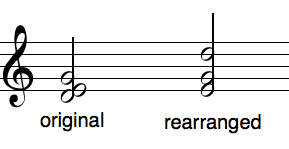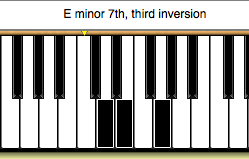Answer: The thing to do is to arrange the mystery notes so that they could form a stack of thirds, positioned as close as possible:

If you do that you'll find that E is the lowest tone in the stack, with G next, B is missing, and D makes the top note. So this is a reasonable voicing of the E minor 7th chord, missing its fifth. If one is going to leave out a note in a seventh chord, the fifth is the preferred victim.
Update: Songworks 3 provides a shortcut if I've gone fishing: play those notes when in the "chord layer" of Songworks and it will tell you the following. Notice that the chord is described as being in "third inversion." That means that the note a seventh above the root has been moved to the bass position:


